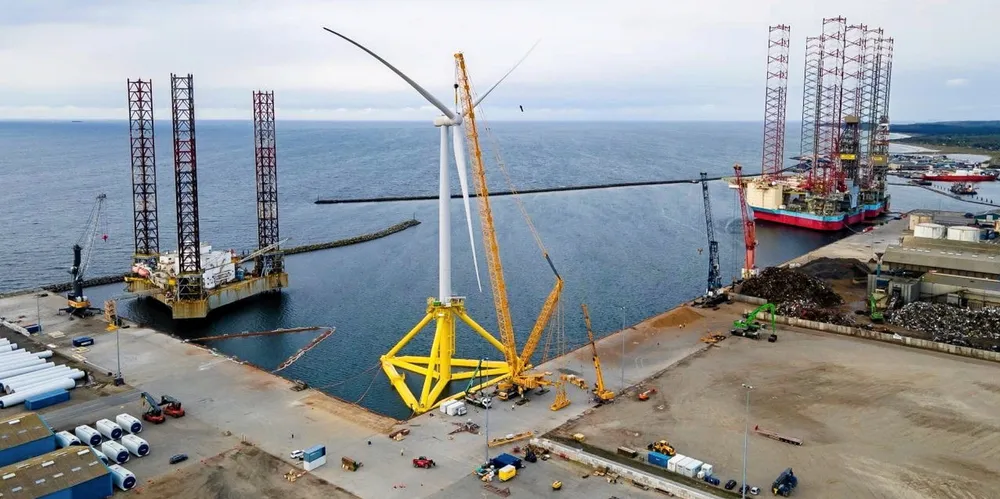UK's largest floating wind project pilots new supply chain strategy as ScotWind trio reveal plans
Developer of 100MW array off Scottish Highlands publishes first 'supply chain development statement' as Mainstream, Ocean Winds and ESB outline how products, materials and labour will be sourced to develop 2.8GW in NE1 zone

The mapping exercise for the Pentland project supply chain, which was fashioned to meet targets of 40-60% UK content, is expected to create up to 1,300 full-time jobs during construction and 85 during operation and total of £419m ($495m) over the plant’s lifetime.
Project director Richard Copeland said: “These are significant figures for floating wind in Scotland and the UK. They showcase our commitment to… nurturing the development of local supply chain capabilities ahead of ScotWind project development – a fundamental aim of this project.
“By carrying out this preparatory work, the process has allowed us to understand the existing supply chain capabilities on offer, and the areas in which we can drive local expenditure, job creation and skills development.”
He added: “We have also taken steps to ensure early visibility of future opportunities and engage with the supply chain as widely as possible.”
Delivered with support from consultancy Xodus and the University of the Highlands & Islands, the plan for the Pentland floating wind farm – though not a ScotWind project – is designed “to demonstrate best practice and to reaffirm commitment to local communities”.
Scott Hamilton, head of offshore renewables at Xodus said: “The project marks an important stepping-stone in progressing the floating wind supply chain in the UK, providing key insights into the strengths and capability gaps of Scottish and wider UK companies.”
The SCDS also “make clear the challenges faced by the sector in realising ScotWind’s potential benefits”, stated Crown Estate Scotland head of offshore wind Colin Maciver, who itemised constraints around “lack of grid availability, bottlenecks for construction and fabrication at preferred sites, and the skills within the labour market”.
However, he added. the SCDS also highlight the “extensive experience and knowledge” that has been accrued over decades of North Sea oil & gas industry operation in Scotland, as well as during the growth of offshore wind sector.
“This round of publications sets out further opportunities for a range of businesses to become involved in delivering the next generation of offshore wind farms in Scotland,” said Maciver.
“The success of the sector is tied closely to the success of building the overall supply chain – that’s why it’s so crucial that information is provided as widely and as early as possible.”
With the addition of a further three ScotWind projects takes to 20 the total with option agreements confirmed, together amounting to a potential 27.6GW of power plant.
The Crown Estate Scotland calculates some £28.8bn in lead-off commitments from developer, pointing to an average investment in Scotland of £1.4bn a project built and £1bn a gigawatt of capacity built.